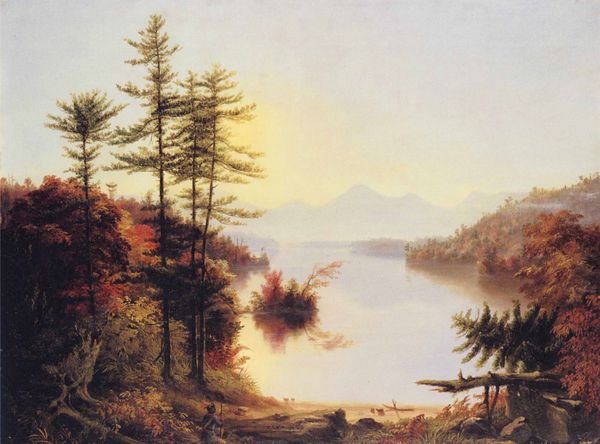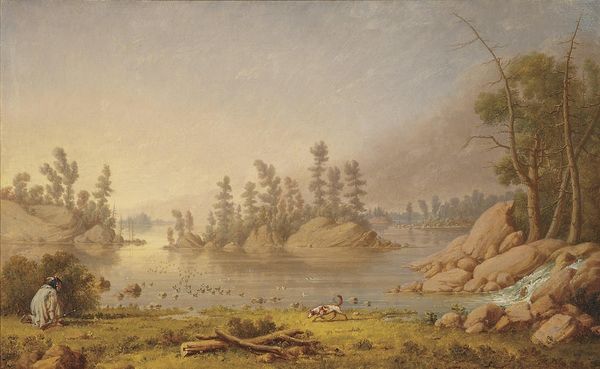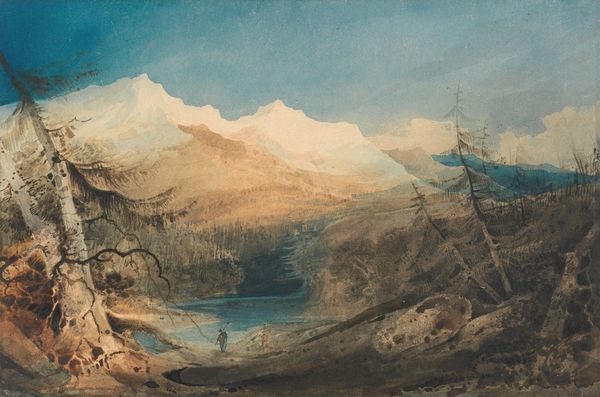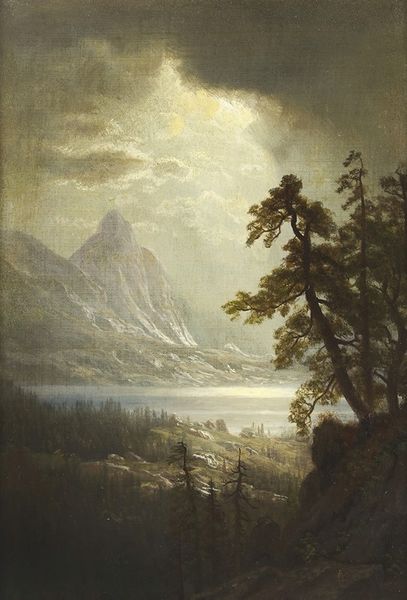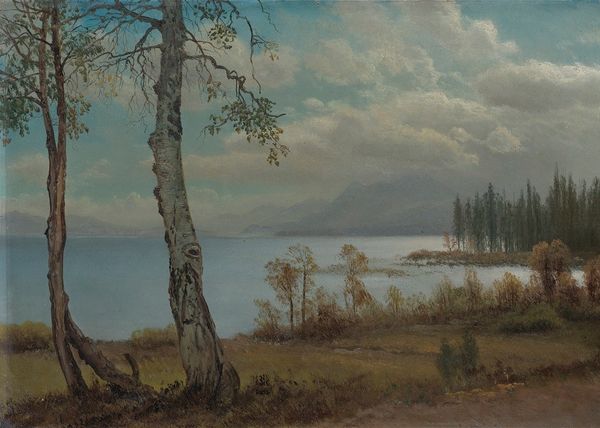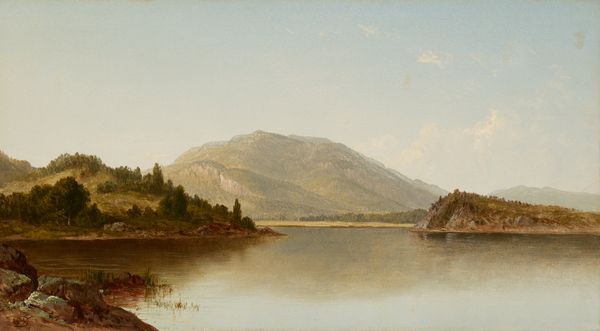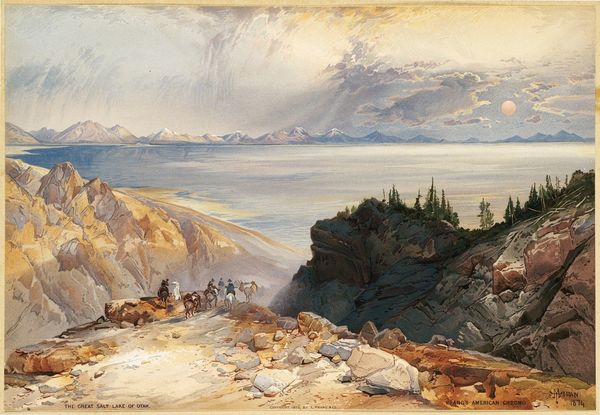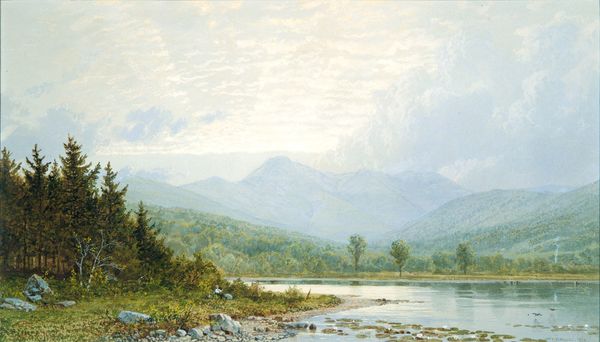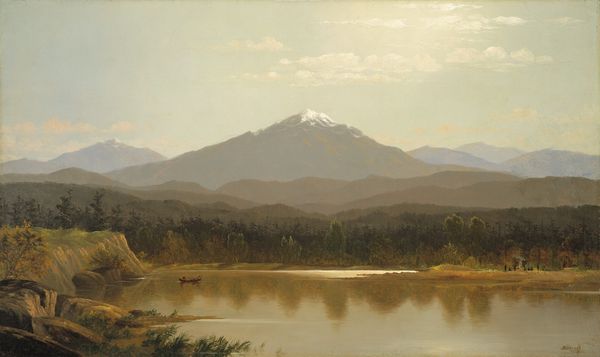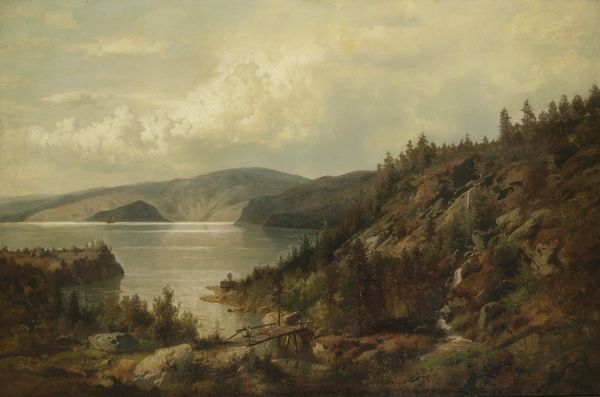
plein-air
#
plein-air
#
landscape
#
impressionist landscape
#
oil painting
#
hudson-river-school
#
watercolor
#
realism
Copyright: Public Domain: Artvee
Curator: Thomas Moran's "Head of Yellowstone River," dating back to around 1875, presents us with a serene view of the American West. The subtle light immediately strikes me as noteworthy. Editor: Indeed, the luminance is remarkable. The pale hues, reflecting the time of day, invoke a melancholic quietude. I’m drawn to the execution, particularly the marks, likely created "en plein-air," they reveal his impression of a fleeting moment in nature. Curator: Precisely! Think about the logistics. Moran was celebrated as an expedition artist; imagine his commitment to the process. Getting materials into such locations would require serious planning. And given his Hudson River School associations, it raises interesting questions about our romanticized views of nature versus the industrialized world. Editor: That connection is crucial. These grand landscapes were part of constructing American identity through visualizing western expansion, often disregarding the labor and materials required. Also the commodification of the very spaces these paintings were advocating for as untamed or threatened! Consider, too, the availability of such landscapes through print reproductions--they are disseminated across the country at the expense of labor! Curator: Right, though Moran emphasizes pictorial construction above any pointed political stance, doesn't he? Consider how the verticality of the trees provides a solid counterpoint to the horizontal stretch of the landscape and lends balance. And those pale colours create a sense of harmony in the work, which speaks of nature's tranquility. Editor: While those artistic choices provide balance, it would be an oversight not to question their motivation when landscape artists can shape how the nation views the environment in ways that could endorse or enable practices affecting the land. Curator: You present a complex consideration. All in all, this exploration shows us how an ostensibly straightforward landscape engages us through its light and also raises challenging questions concerning materiality and perception. Editor: A productive paradox! Considering all the artwork reveals regarding artistry and means of production makes revisiting landscape painting more compelling.
Comments
No comments
Be the first to comment and join the conversation on the ultimate creative platform.
